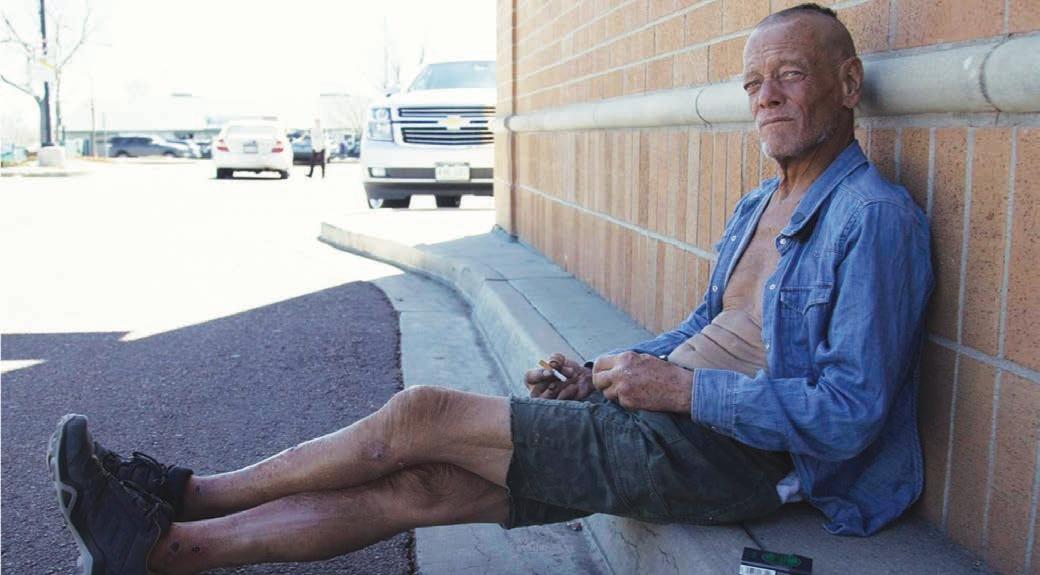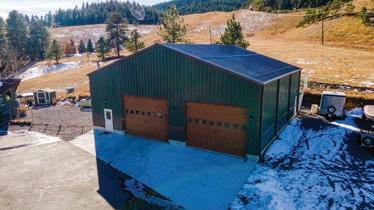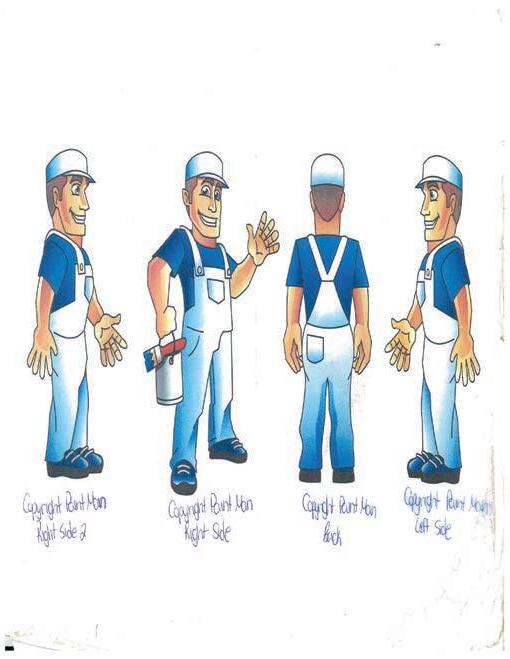
6 minute read
Unhoused Coloradans turn to methamphetamine as a form of protection
BY ALISON BERG AND ZACH BEN-AMOTS
Stephen Copeland hardly knows life outside of prison.
He has spent 24 of his 65 years of life rotating through correctional facilities in the state. He can count them all and recite how long he stayed in each, and for what offense.
Most recently, Copeland did 24 years in the Limon Correctional Facility for arson.
Now living on the street in Colorado Springs, Copeland does his best to stay out of trouble by cleaning up after himself, not using drugs in front of too many people and avoiding ghts. But life inside could have been worse, Copeland said. He spent his days lifting weights, socializing and trying to forget the grim realities of living inside a locked box with little to look forward to on the outside.
Other prisoners could be brutal, he said. Fights were frequent and Copeland said inmates often had to make rash decisions to protect themselves or others.
He survived as a member of the Aryan Brotherhood, a white supremacist gang. He was a member of Aryan Brotherhood long before prison, though Copeland said people have two choices when they’re incarcerated: join a gang or fall victim to a gang.
“I got more respect in prison than I did out here, by far,” Copeland said. “I knew all the fellows in the joint and they all knew me.”
Copeland was introduced to white supremacy as a teenager in Colorado Springs, where he grew up. He said the Aryan Brotherhood and its beliefs aren’t uncommon in Colorado’s second-largest city. On its surface, Colorado Springs is known for its proximity to Pikes Peak, mili- tary presence and its evangelical base. But the city has a dark underbelly, Copeland said. One of white supremacy, violence and heavy drug usage.
Around the same time he was introduced to violent racism, Copeland also found methamphetamine. He snorted and ingested the drug for decades, then began smoking it after his most recent exit from prison, six years ago.
Copeland is part of a growing number of people experiencing homelessness who use methamphetimine to stay awake longer and protect their belongings. While opioids used to be responsible for the majority of overdose deaths, El Paso County data show meth is now to blame for the majority share of overdoses in the Colorado Springs area.
In the early years of his usage, sobriety was a nice idea, Copeland said. ough it may never have been a real possibility, it was always a goal in the distant background.
At 65, all of Copeland’s family members are dead, he has no close friends, and his days revolve around evading police and staying awake long enough to guard his belongings from other unhoused people who are seeking replacements after police take their belongings. Copeland also has Crohn’s disease, a digestive disease that makes eating di cult and often painful. He described the disease are-ups as “you’re starving but you can’t eat because you’ll get sick.” e day is standard for Copeland: try and force himself to eat some of what he bought with his monthly $60 in food stamps, cross his ngers that the police don’t target his belongings and smoke enough meth to make life a little more bearable.
Denim shorts that stop just above his kneecaps reveal sores up and down Copeland’s legs. ey are symptoms of the disease. He doesn’t wear a shirt, exposing more sores and bones on the upper half of his body covered by thin layers of skin.
On an April morning, he smokes a cigarette next to a group of other unhoused folks on a torn-up couch at the corner of Uintah and 19th Streets, just outside a shopping plaza with a grocery store, car wash and thrift store. e group discusses a path forward after police took an acquaintance’s sleeping bag, tent and clothing. Copeland’s belongings survived the raid. He’s not sure how, but he’s grateful.
For Copeland, life without meth sounds far worse than one with it.
“Right now, reality sucks and meth is an escape from reality,” Copeland said. “I used to have pretty good control over my use, but now I don’t care anymore.”
Steven Copeland holds up his pipe to show his primary method of using meth. Copeland says he uses more meth now than ever before, calling it an e ective painkiller for chronic health issues and also an escape from the challenges of homelessness.
“Meth: you can’t get away from it” ough Copeland has few people he considers “friends,” he says he knows most unhoused people in Colorado Springs, at least those within two miles of him.
“Pretty much all of them do meth,” Copeland said of others living outside. “ is is probably the meth capital of the United States. It’s everywhere. You can’t get away from it.”
Copeland said he has a few friends with indoor housing, and he occasionally exchanges drugs for a few-night’s stay. A gram of meth and an eighth of weed can buy him three nights, a few home-cooked meals and a shower. While living on the streets and forcing himself to eat dry noodles, a meal and shower are luxurious for Copeland. e 2022 Point-in-Time Count, a survey administered annually in El Paso County measuring the county’s houseless population and factors contributing to homelessness, found 14% of unhoused people in Colorado Springs cite Substance use disorder as a reason for their homelessness.
PJ Higgins, the opioid prevention project manager for the Community Health Partnership, a Colorado Springs nonpro t that works on health equity issues, said that number doesn’t represent everyone who has substance use disorder. Most who have the disorder are not homeless, and many who are experiencing homelessness use substances but don’t cite their usage as a reason for their circumstances.
“Certainly, there’s a strong interaction between people who are homeless and substance use disorder,” Higgins said. “Substance Use Disorder does become a signi cant barrier to exiting homelessness.”


Homeless shelters do not allow drugs inside their facilities, and many pathways to long-term housing require sobriety as a prerequisite. ose who are ready to get sober immediately can choose rehabilitation facilities, but those are often expensive. And for many, sobriety is an ultimate goal, but the harsh realities of living outside make it feel impossible.
“When people don’t have access to care, often what happens is they turn to a substance in order to help navigate or self-medicate the condition they’re dealing with,” Higgins added. “ inking about Substance Use Disorder not as a series of bad choices but as the result of a need to manage trauma and its impacts on mental health and state of mind and ability to navigate the ups and downs in life in a way that’s healthy is a key component of understanding.”
Melissa Chizmar is the prevention services manager at Southern Colorado Health Network, where she oversees the safe needle and supplies exchange program.
Melissa Chizmar, prevention services manager at the Southern Colorado Health Network, said of the unhoused folks she works with, more than half use methamphetamine.
“Meth, because it’s a stimulant, is going to keep people awake,” Chizmar said. “I think that’s important when you think about how cold winter nights can be and the thefts you see during that time because of exposure, which can certainly be a reason why some people might use meth, to ensure they survive the night.”
Meth and heroin are the most used substances reported among the unhoused community, Chizmar said. Meth is the most common.
Many unhoused people, Chizmar explained, turn to meth and other substances to cope with trauma –either pre-existing trauma or trauma made worse by surviving harsh winters, encampment sweeps, and general hostility, realities that come alongside homelessness.
“We de nitely see here in Colorado Springs that addiction and homelessness often overlap,” Chizmar said. “Addiction doesn’t occur in a vacuum. It’s often a result of the environment.”

Death in small doses

Until about ve years ago, opioids accounted for the majority of drug overdoses, according to the Center for Disease Control and Prevention.
But according to data from the El Paso County Coroner’s O ce, methamphetamine accounted for 48 of the county’s 216 drug overdoses in 2022. A combination of meth and fentanyl came just behind with 42 deaths. Fentanyl alone accounted for 36 deaths.
Data provided by the El Paso County Coroner’s O ce ough Chizmar and Higgins said fentanyl is di cult to avoid if a person is using illicit drugs, some
Drug-related accidental deaths also jumped by 55% between 2021 and 2022, according to the coroner’s data.
Fentanyl is a powerful opioid used in hospitals as a pain reliever. But the drug – which is 50 times stronger than heroin and 100 times stronger than morphine – is found in much of the drug supply on the streets, often unbeknownst to the people buying and using illicit drugs. Because fentanyl is so potent, two milligrams is considered a lethal dose, according to the United States Drug Enforcement Administration.
Chizmar said many who died via fentanyl overdose often had no idea they were using the potent opioid to begin with. Many thought they were using meth alone without knowing their stimulant was laced with fentanyl. Chizmar described this scenario as extremely common.
“We know that so much supply is contaminated with fentanyl that it’s essentially turning people into poly-substance users, even if that isn’t something they wanted,” Chizmar said.
SEE METH, P31




Rock, Mulch, Retaining Walls, Sprinklers, Sprinkler Repair, Flagstone, Fence Repair, Power Rake, Fertilize, Aeration, Yard Clean-Ups, Shrub

Rock Removal, Weed Control, Trash Hauling and Much More!


Sprinklers,Toilets,Sinks, Disposals,WaterHeaters,GasLines, BrokenPipes,Spigots/Hosebibs, WaterPressureRegulator,IceMaker, DrainCleaning,DishwasherInstl., forcouponsgoto vertecservices.com CALLVertec303-371-3828














